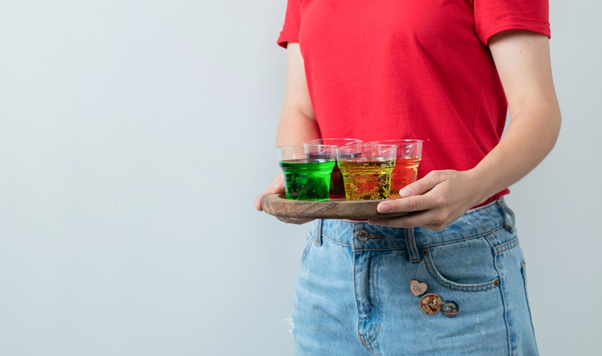Daily life in the Philippines revolves around sweetened beverages; sugary drinks, including fruit juices, milk tea, and soda, are rather popular. However, many Filipinos have started to cut back on their sugar intake as knowledge of health and wellness advances. Rising worries about obesity, diabetes, and other health problems connected to high sugar intake draw attention and demand for better substitutes for traditional sweeteners has surged. Low-GI sweeteners have lately become a main choice for those trying to cut their sugar intake yet still enjoy their preferred drinks. This article investigates the possible health benefits, market demand, and several choices open to consumers of low-GI sweeteners for beverages in the Philippines.
Popularity and PH Sweetener Beverage Statistics
Many Philippine houses now feature sugary drinks as a staple. A poll by the Philippine Statistics Authority shows that soft drinks, sweetened teas, and energy drinks abound in the average Filipino diet. Philippine sugar consumption has been continuously increasing during the past 10 years, which helps to explain growing health issues, including type 2 diabetes, obesity, and high blood pressure. With more people choosing beverages with less sugar or better sweetener alternatives as the Philippines battles increasing rates of non-communicative disorders, there has been a clear change toward better drink options.
The market and demand for low-GI and low-Cal sweeteners
The need for better substitutes for conventional sugar rises along with growing knowledge of health issues. Philippine consumers continue to develop their taste for low-GI and low-calorie sweeteners since these options allow them to stay sweet but maintain their fitness level. These sweets have grown very popular among many individuals as they help to regulate blood sugar, cut calorie intake, and reduce diabetes and obesity risks. Companies are providing low-calorie, low-GI products to consumers more and more, so the Filipino market accepts them as part of their wellness trend. Growing media coverage and health programs advocating good living also help to clarify this change in consumer choices.
Low-GI or low-Cal sweeteners are what?
Low-GI sweeteners are sugar replacements whose use has minimal effect on blood sugar levels. A gauge of how rapidly foods increase blood sugar levels following ingestion is the glycaemic index (GI). High-GI foods induce fast blood sugar rises that, over time, can contribute to insulin resistance. For people wanting to control their calorie consumption, low-Cal sweeteners—which replace ordinary sugar—are perfect as they offer fewer calories. These sweeteners can be used in many beverages, including tea, coffee, juices, and smoothies; they are natural and synthetic substitutes as well. Choosing low-GI sweeteners allows people to experience sweetness free from the negative consequences of blood sugar swings and too high-calorie consumption.

The Health Effects of Low-GI or Low-Cal Sweeteners
Using low-GI sweeteners mostly benefits from their capacity to assist in the control of blood sugar levels. Those with diabetes or those who run the danger of acquiring the illness especially need this. Selecting low glycaemic index sweeteners allows consumers to enjoy sweetened beverages free from the usual blood sugar spikes and crashes brought on by eating high-GI items. Because they help to lower total calorie intake, low-calorie sweeteners also help to control weight. These sweeteners are a terrific choice for everyone trying to reduce their weight while yet satisfying their sweet taste since they offer few to no calories. Moreover, some of these sweeteners are connected to a lower risk of dental damage since they prevent the building of plaque, unlike traditional sugar.
The Natural and Artificial Choices in the Market
Nowadays, there are many low-GI and low-Cal sweeteners available in the market. These generally fall into artificial and natural sweeteners. Derived from plants, natural choices include stevia, monk fruit extract, and erythritol, which offer sweetness without appreciable calories or effect on blood sugar levels. Conversely, often employed in a range of marketed beverages, artificial sweeteners, including aspartame, sucralose, and saccharin, give zero-calorie sweetness. However, many Filipinos have started to cut back on their sugar intake as knowledge of health and wellness advances. Rising worries about obesity, diabetes, and other health problems connected to high sugar intake draw attention and demand for better substitutes for traditional sweeteners has surged.
Difficulties, If Any, in Changing to Low-GI or Low-Cal Sweeteners
While low-GI and low-Cal sweeteners enjoy many benefits, for certain clients, progressing from regular sugar to these substitutes can be troublesome. Taste is among the key difficulties. Many individuals are utilized to the incredible sweetness of refined sugar and could find it challenging to change to the milder sweetness of some low-calorie sweeteners. Moreover, there are inquiries regarding the security of counterfeit sweeteners since specific exploration infers that too maximum usage of explicit mixtures could have long haul unfortunate results on wellbeing. However, authentic realities, as a rule disprove these feelings of dread; they truly do impact shopper conduct. Moreover, entrancing is the way that not all low-GI desserts are made in much the same way; some might, in any case, influence glucose levels or exasperate stomach issues when taken in huge sums.
How FOS Might Be the Perfect Solution
Natural, low-calorie, low-GI sweetener fructooligosaccharides (FOS) have drawn interest as a perfect substitute for sugar for people trying for a better option. Derived from plants, FOS provides a sweet flavour without increasing blood sugar levels. Apart from being a low-calorie sweetener, FOS has prebiotic properties that enhance gut health by way of the increase of beneficial bacteria. As more people search for natural and health-conscious sweeteners, FOS has become a popular alternative for customers seeking a safe and quick replacement for sugar. It’s a terrific option for anyone attempting to regulate their blood sugar levels while still enjoying a sweet taste in their beverages or those with diabetes.
Professional Opinion and Research Studies
Health-conscious people would be wise to switch to low-GI and low-Cal sweeteners, according to experts. Low-GI sweeteners have been shown by scientific studies to help reduce blood sugar spikes and increase insulin sensitivity, therefore assisting initiatives at weight control. Research also shows that these sweeteners may lower the risk of cardiovascular disease and assist control of diabetes. While the additional review is expected to completely get a handle on the drawn-out impacts of low-Cal sweeteners, the current collection of proof backs their utilization as a sensible and safe substitute for conventional sugar.
Conclusion:
Choosing low-GI sweeteners for your favoured refreshments is a savvy decision that will help your overall well-being and state of well-being. With a rising market for better sweetener replacements, consumers today have a wide selection of options that provide a sweet flavour without the bad health impacts related to sugar. Whether you use natural or synthetic sweeteners, the most important thing is to choose something that advances your health-related goals. Our aim at Biowearthglobal is to offer low-GI, premium sweeteners that allow you to keep a better lifestyle while yet savouring your preferred tastes.
